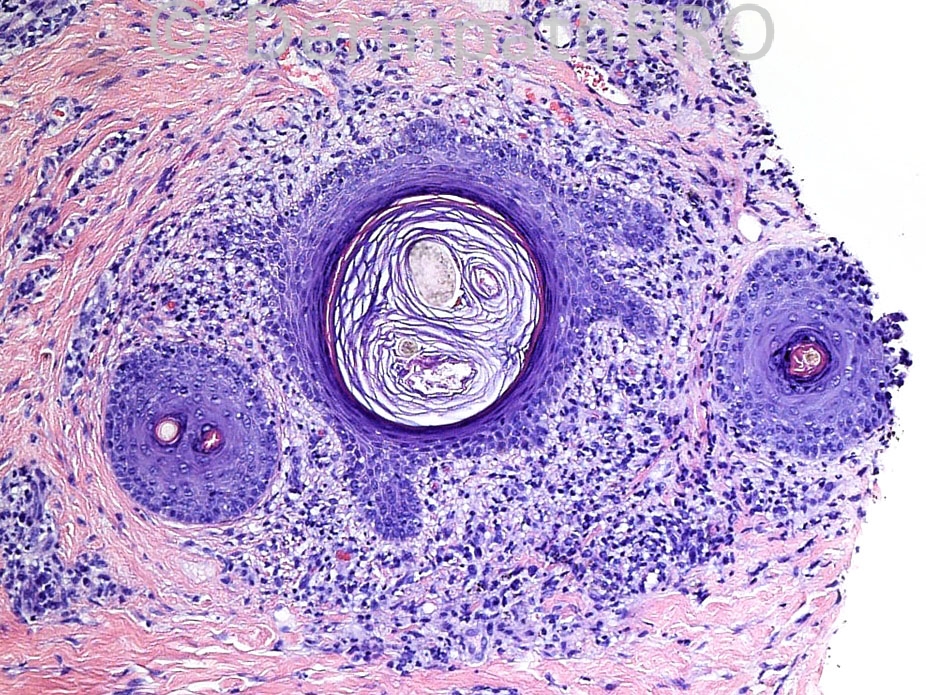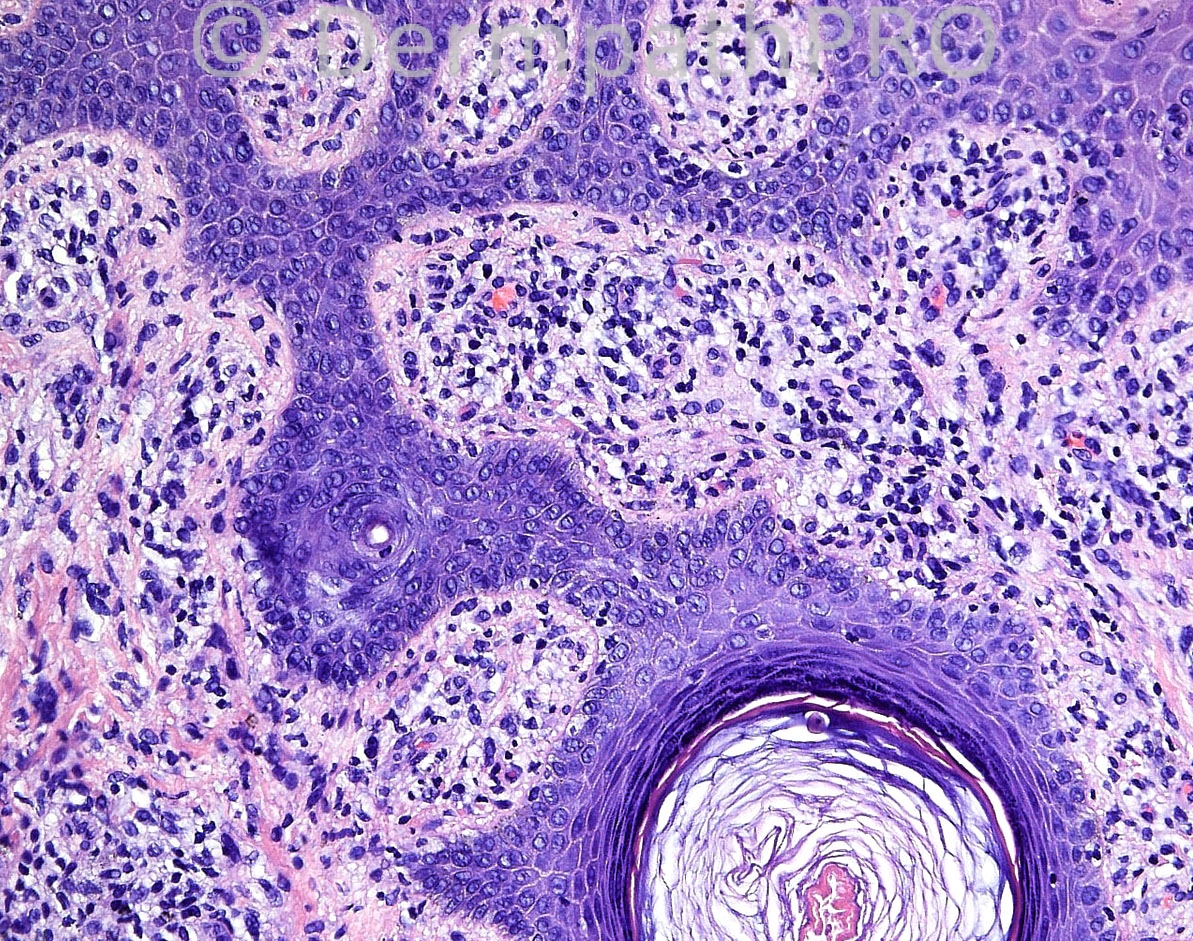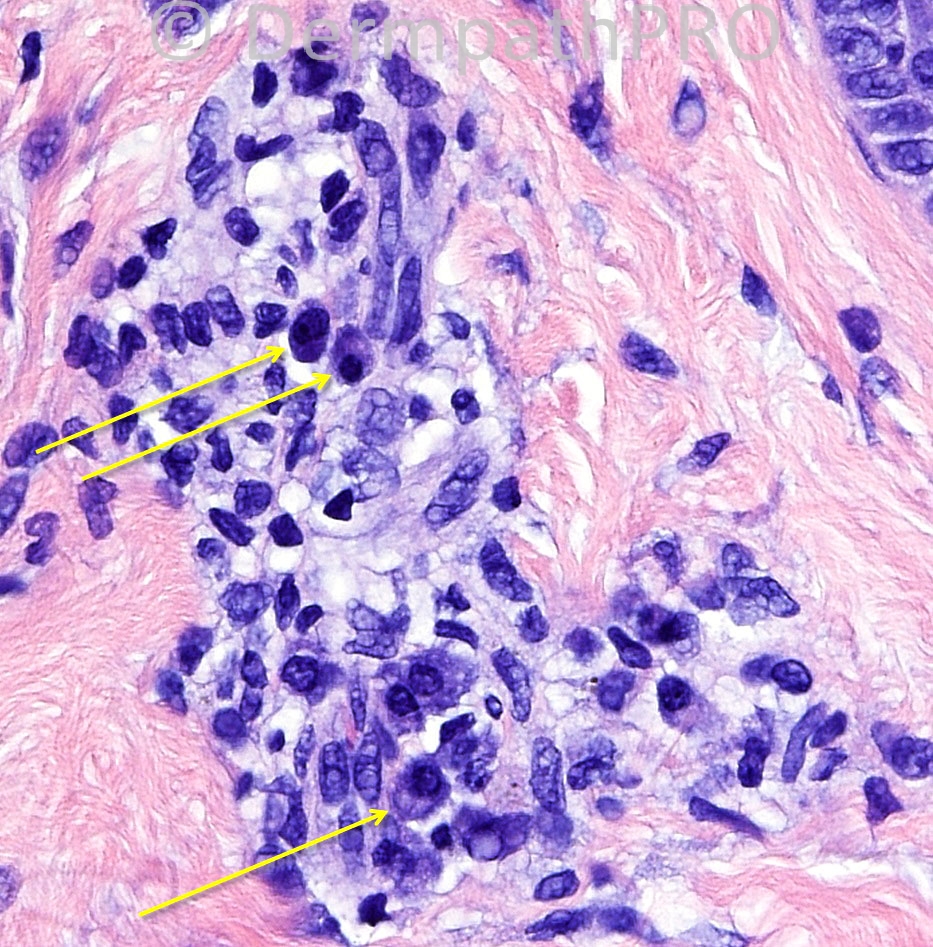Case Number : Case 808 - 23rd July Posted By: Admin_Dermpath
Please read the clinical history and view the images by clicking on them before you proffer your diagnosis.
Submitted Date :
21 years-old white male, DS, Occiput biopsy.
Case posted by Dr Mark Hurt.
Case posted by Dr Mark Hurt.






Join the conversation
You can post now and register later. If you have an account, sign in now to post with your account.